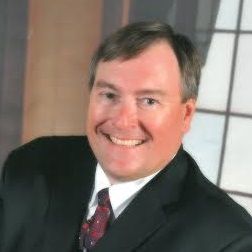- Home
- About
- Courses
- IR/INFO CONFERENCE
- Software
- EXPERT SERVICES
- STANDARDS
- Proposal Templates
- Electrical Systems and Rotating Equipment
- Building Envelopes
- Insulated Roofs
- Photovoltaic Systems
- Pest Detection
- Yachts and Small Craft
- Thermal Imaging of Horses
- Optical Gas Imaging
- Measuring Reflected Temperature
- Measuring Emittance
- Measuring Transmittance
- Distance/Target Size Ratios
- Complete Series
- Resources
- BUSINESS OPPORTUNITIES
- STORE

Director’s Message

Post processing of thermal images is a common practice for many thermographers. While image processing may provide a measure of convenience for some, it can have significant drawbacks.
For many thermal imagers, infrared images can be stored in 12 bit format. Saving thermal images in 12 bit format allows thermal images to be recalled at any time and post processed for level, gain, and color palette. For imaging radiometers, temperature measurement settings such as emittance may also be changed. Post processing may take place within the imager or through a separate personal computer using the manufacturer’s proprietary software.
Over time, many thermographers have adopted a policy of quickly recording imagery in the field and then returning to the comfort of their office to further process their imagery. Although post processing affords the thermographer a variety of options for image analysis, one should be aware that post processing can be time consuming. Spending as little as five minutes processing imagery can result in a substantial increase in report preparation time.
In addition to wasted time, post processing may invalidate imagery as legal evidence. Not unlike digital photography, thermal images that have been post processed are creations and not originals. Should a thermographer’s report be introduced in a claim, a competent opponent will likely question if the imagery is original. In such situations, a thermographer must be able to affirm that his/her report does not contain processed imagery.
In light of the above, it is recommended that thermographers store images exactly the way they will appear in their report and endeavor to avoid post processing altogether.
Join Infraspection Institute’s Course Reseller Program

Proper training is essential to the success and longevity of any infrared inspection program. If you are a professional thermographer, distribute infrared or related test equipment, or are involved in professional training, we can help you to increase both sales and profits. An affiliation with Infraspection Institute can also help to increase your company’s visibility without compromising your credibility.
With the proliferation of cheaper infrared cameras, competition has become more fierce and profits more scarce. Offering training can not only expand your services and increase profits, it can help provide a long-term relationship that keeps your clients ‘on the farm’ and close to you.
Because Infraspection Institute do not sell infrared equipment, our courses are presented without marketing hype. Since we are not affiliated with infrared equipment manufacturers, you can rest assured that your clients are not being hijacked by a competitor. Best of all, you have several options to choose from including open enrollment classes, on-site courses, and our convenient web-based Distance Learning courses.
Attend IR/INFO and Get FREE Training!

In celebration of IR/INFO’s 30th anniversary, Infraspection Institute are pleased to announce a special offer combining the world’s most respected infrared training and certification program with the industry’s original technical conference.
Attend IR/INFO and receive a tuition voucher for up to 100% discount on a 2019 Infraspection Institute Certified Infrared Thermographer® training course.
Special offers may not be combined with any other discount. Training course vouchers must be used by 12/31/19. Tuition vouchers are transferable to a third party for a $500 administrative fee.

Why Building Corners Appear Cool

Corners are a common construction detail found within building walls that utilize frame construction. Corners are typically constructed with vertical framing members that both support the framed wall and provide a nailing surface for interior paneling or drywall. Although details can vary, a typical corner has three vertical studs in close proximity to each other.
More energy loss occurs at corners for two reasons: Studs are more conductive than insulation; and there is little or no space for insulation to be installed wherever corner framing studs are present. Because of this, it is normal to see greater energy loss at corners when compared to a properly insulated wall cavity.
When performing an infrared inspection of framed walls from the interior of a building with cold outdoor temperatures, corners for outdoor walls will typically appear cooler than insulated wall cavities. Observed thermal patterns will reverse should the same inspection scenario exist with warm outdoor temperatures.
When thermographically inspecting corner details, it is normal to observe a straight vertical line from floor to ceiling. This vertical line should be confined to the corner itself and not extend onto the flat wall surfaces adjacent to the corner. Amorphous or geometric thermal patterns appearing within or adjacent to corners should be investigated for cause.
Professional Curriculum
Infraspection Institute instructors use extraordinary techniques to deliver stimulating, effective, and relevant instruction. All of our instructors are highly experienced, practicing thermographers. Each brings years of unmatched, real-world experience to the classroom. Our courses are taught using a combination of dynamic multi-media presentations, hands-on demonstrations and one-on-one interaction with students. Our courses integrate theory, practice, and case studies in a fun, relaxed atmosphere designed to maximize your learning experience.

